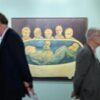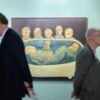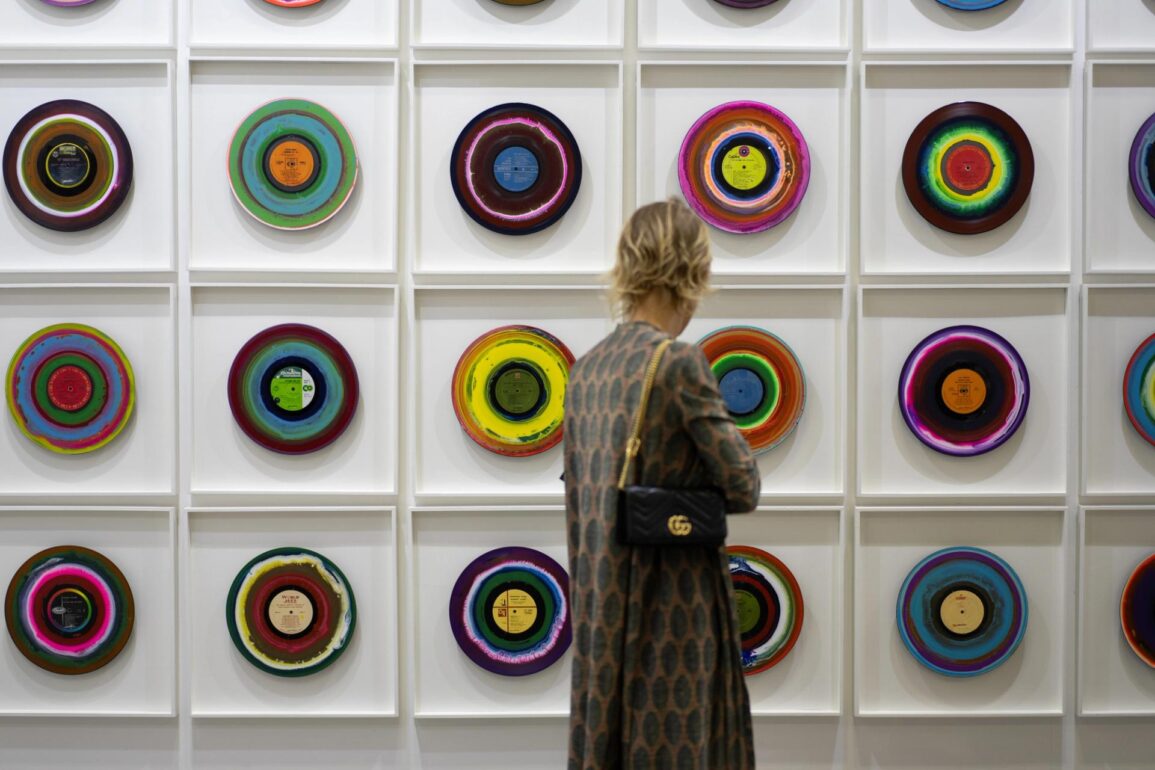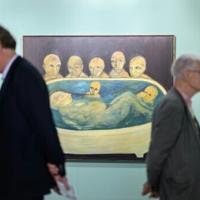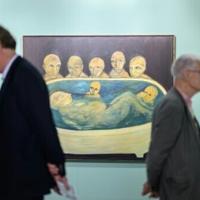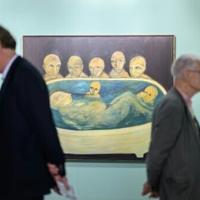This year Art SG returns to its roots, with an expanded roster of Singapore-based galleries attesting to how the city-state’s art scene has grown in recent years. Of the fair’s 106 participating galleries, 21 have locations in Singapore, of a total of 32 from Southeast Asia. This compares to 20 from Singapore last year and 19 at the first edition in 2023, which respectively featured 114 and over 164 galleries overall.
“Singapore’s art scene has only grown from strength to strength since [2023],” says Magnus Renfrew, co-founder of Art SG and its parent company The Art Assembly, “with new arts and cultural spaces, as well as private foundations opening over the year.” He cites the June 2024 reopening of a local space for the Australian gallery Sullivan+Strumpf, after it closed its gallery in the arts cluster Gillman Barracks in 2020. Last July, Tang Contemporary Art added a permanent Singapore space as its eighth location, joining cities like Bangkok, Beijing and Hong Kong. Renfrew also highlights the new lifestyle and creative industries cluster New Bahru, which launched in August.
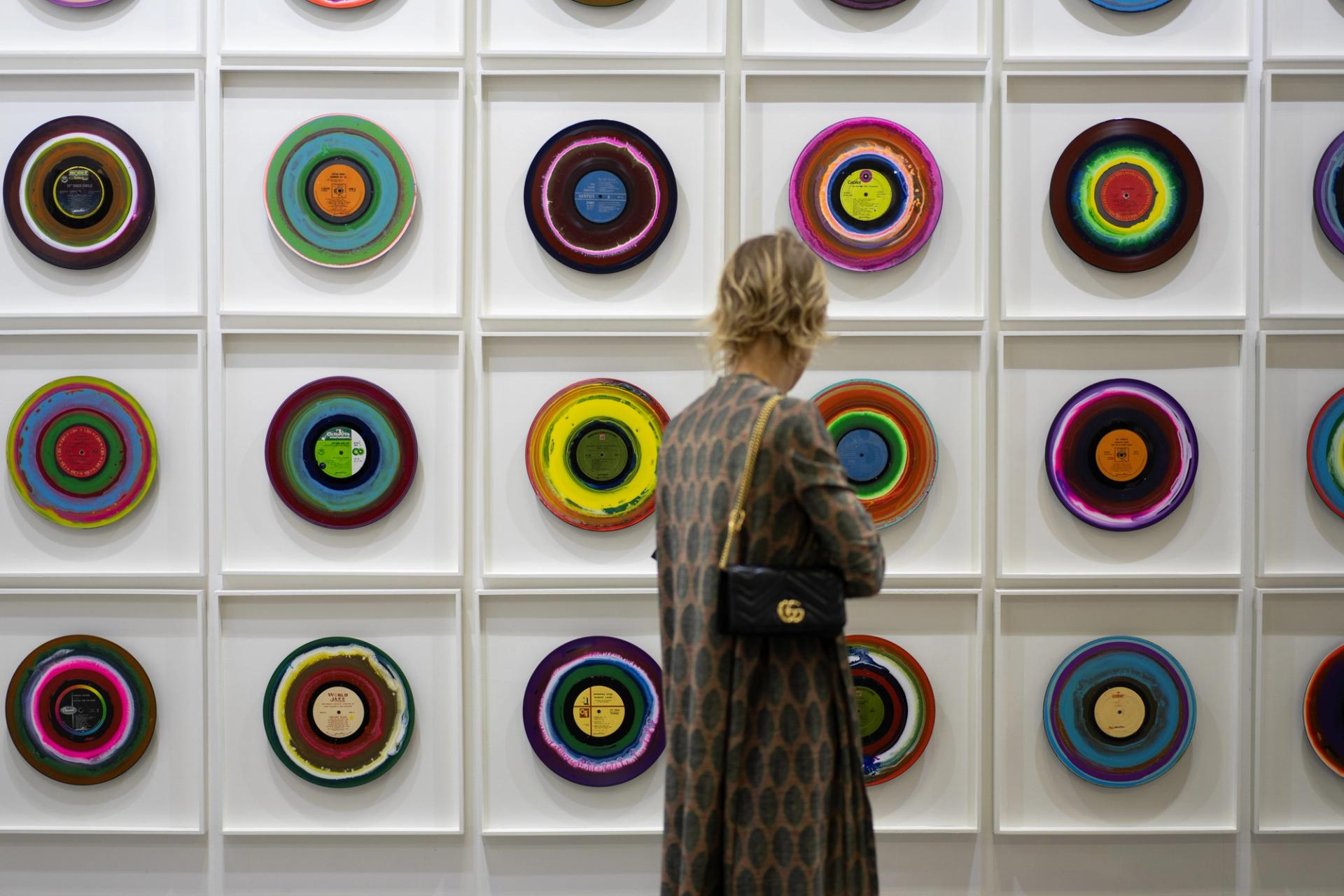
A visitor looks at Turntable Paintings, 60 pieces(2023), by Gerardo Tan at Art SG 2024 Photo: Sam Chin; courtesy of Sam Chin and ART SG
More art spaces are emerging around the Tanjong Pagar district, anchored by the Singapore Art Museum (SAM), which is gaining traction and attention, says Audrey Yeo, president of the Art Galleries Association Singapore (AGAS) and founder of gallery Yeo Workshop.
Yeo Workshop is among the six galleries returning to or new to Art SG this year, including two from Singapore, and will be presenting the emerging artists Shayne Phua and Wei Leng Tay. Other Singapore-based galleries at the fair include Ames Yavuz, which will show works by acclaimed artists from Southeast Asia including the Singaporean artist Alvin Ong; FOST Gallery, which celebrates its 20th anniversary next year; artcommune gallery, which will present an exciting array of modern and contemporary paintings spanning three generations of Singaporean artists; Sullivan+Strumpf’s booth, which will include Singapore’s Dawn Ng; and Haridas Contemporary, which will show works by Melissa Tan, Jeremy Sharma and Esmond Loh.
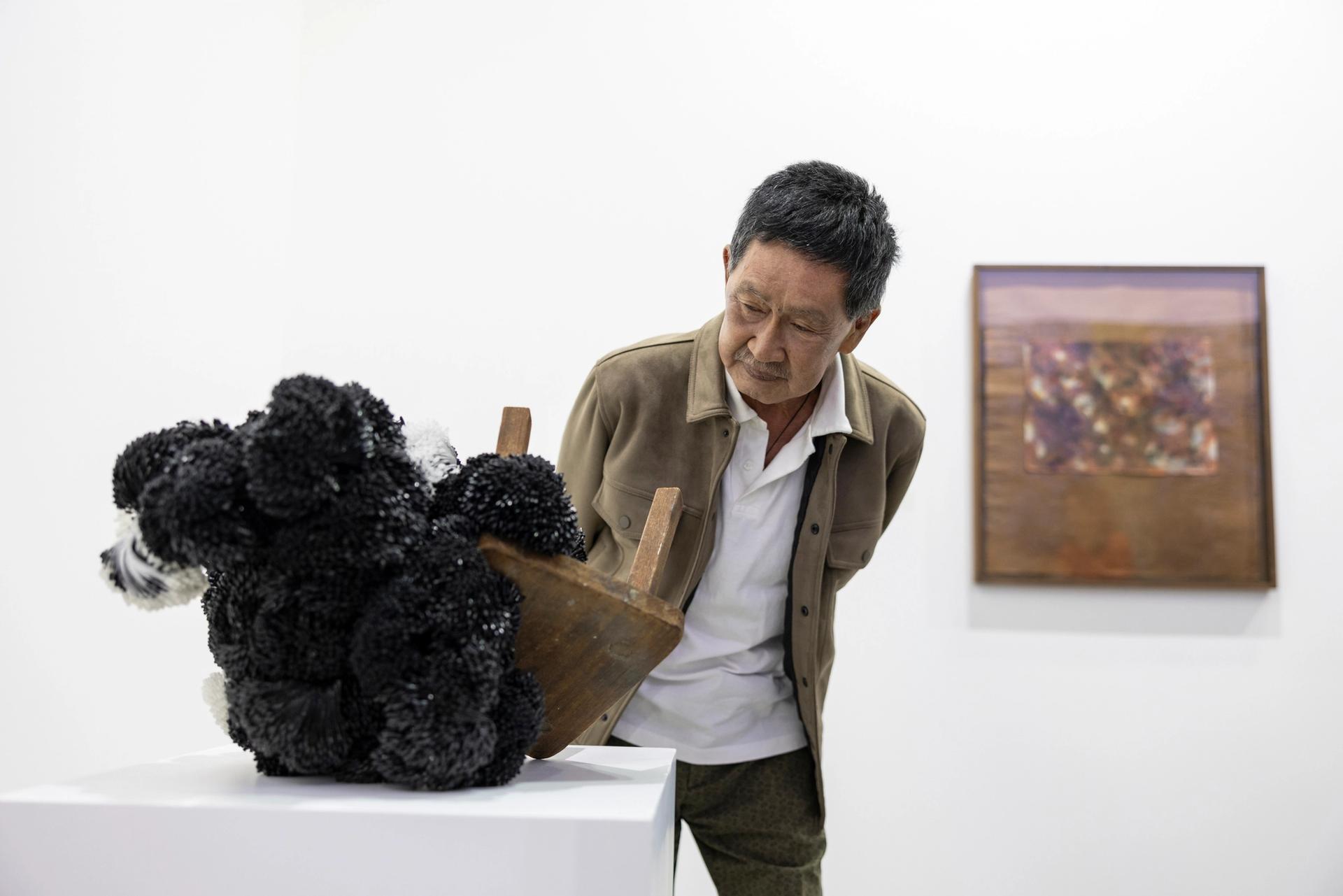
A visitor at FOST Gallery, founded in 2006 by Stephanie Fong, whose mission was to show progressive contemporary artists from around the world with a special focus on artists based in Singapore Photo: Sam chin; courtesy of Sam Chin and ART SG
“In Singapore, just like other cities, we have galleries ranging from small to established ones, who are working with artists and collectors in Singapore, Southeast Asia and the larger part of Asia,” says Emi Eu, project director of the S.E.A. Focus fair, which starts during Art SG (18-26 January). The boutique platform at Tanjong Pagar has since its 2019 launch been exclusively dedicated to artists from the region. “One of the biggest challenges that galleries face in Singapore is the smaller market size, hence we look to the region more broadly as our market,” Eu continues. “Singapore Art Week therefore plays an important role in attracting attention from the region and beyond to bring in visitors to experience the best contemporary art from Southeast Asia. This is a concerted effort, from the galleries to institutions, and we can see the development of ecosystem growth annually.”
Singapore continues to be a focal point for collectors from across Southeast Asia
Magnus Renfrew, co-founder, Art SG
Renfrew flags the latest Art Basel and UBS Survey of Global Collecting (2024), which showed that Singapore had the highest proportion of new collectors of any region, with 42% collecting for less than six years. In Singapore, 97% of respondents expressed optimism about the global market, and 52% of surveyed collectors planned to purchase more art last year. The city’s share of global art exports grew from 1% in 2019 to 5% in 2023. Singapore’s GDP grew by an estimated 3.5% in 2024, according to its Ministry of Trade and Industry. “In addition to an established set of dedicated collectors who are a committed part of the art community in the city state, Singapore continues to be a focal point for collectors from across Southeast Asia,” says Renfrew. “There are a lot of mainland Chinese who moved during the pandemic and have made Singapore their permanent base.”
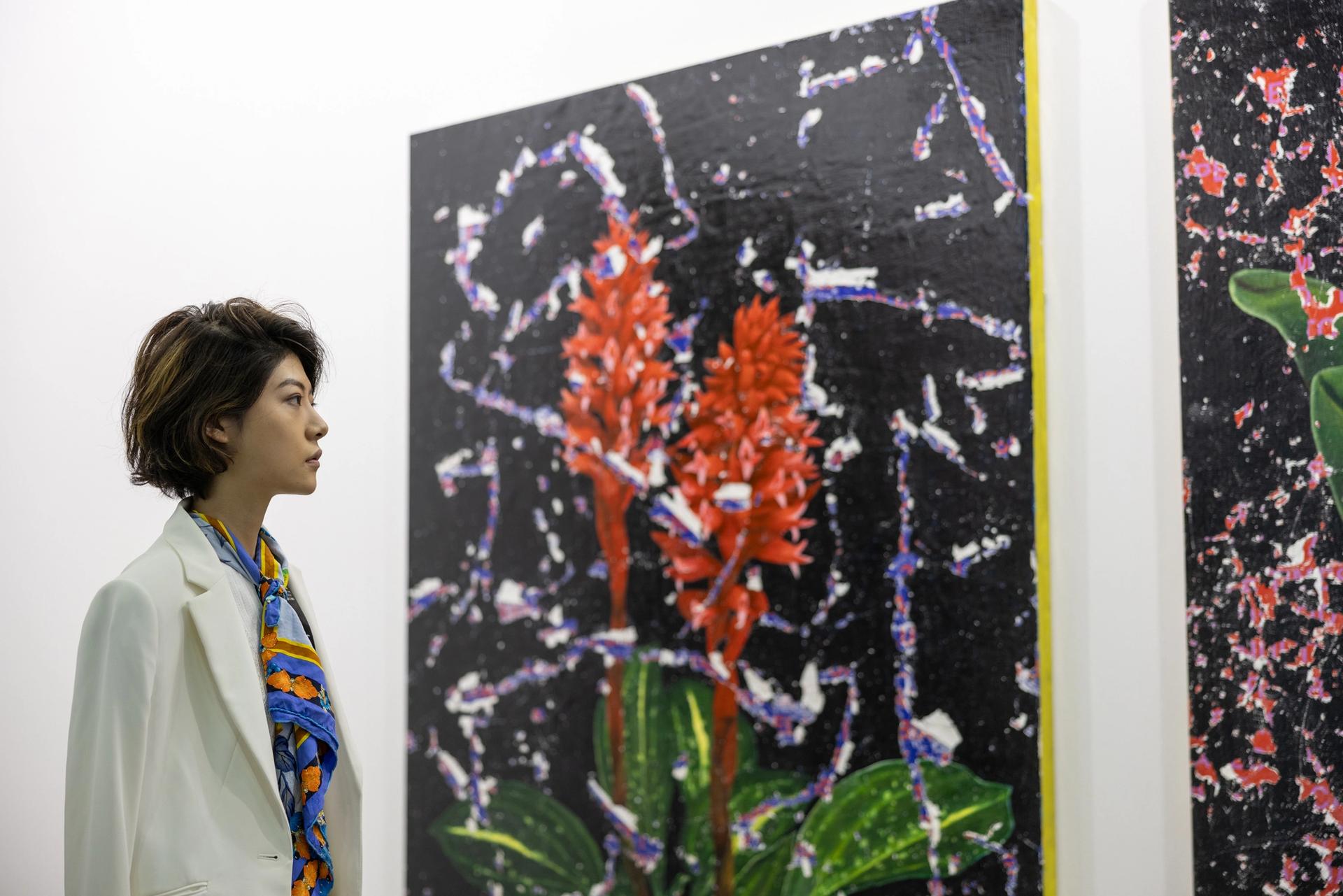
Artinformal, a gallery based in Makati City, Manila, was founded to promote contemporary Filipino art. It shows a broad range of art forms including sculpture, painting, pottery and installation Photo: Sam Chin; Courtesy of Sam Chin and Art SG
“The scene exists within a relatively ‘safe’ enclave of high-net-worth individuals who are constantly relocating to Singapore, lending it an appearance of evergreen stability,” echoes Yeo. The newcomers, mostly representatives of family businesses from Hong Kong and mainland China, and rich families establishing secondary homes in Singapore, have pushed the number of resident Chinese nationals to about half a million, with the 1.4 million tourists from mainland China in 2023 expected to rise with recent visa waivers. However, their interest in collecting art, and specifically in Singapore, mostly remains more potential than established.
There are exceptions. Last year the mainland Chinese collector Li Fan launched the private Whale Art Museum, which opened with a show of work by the Chinese artists Ouyang Chun and Huang Yuxing. The artist-centric M Art Foundation has been active in China, Singapore and worldwide since 2020. Indonesian agrobusiness scions Belinda and Anderson Tanoto are adding a new Singapore-based art foundation to their family’s educational foundation. Headed by the Shanghai-born, New York-based curator Xiaoyu Weng, the Tanoto Art Foundation will launch during Art SG with a symposium featuring artists including Melati Suryodarmo and Gala Porras-Kim, and curators and historians like Joselina Cruz, director of Manila’s Museum of Contemporary Art and Design (MCAD). They join homegrown initiatives like the curatorial non-profit The Institutum, which has been promoting Singaporean art since 2019.
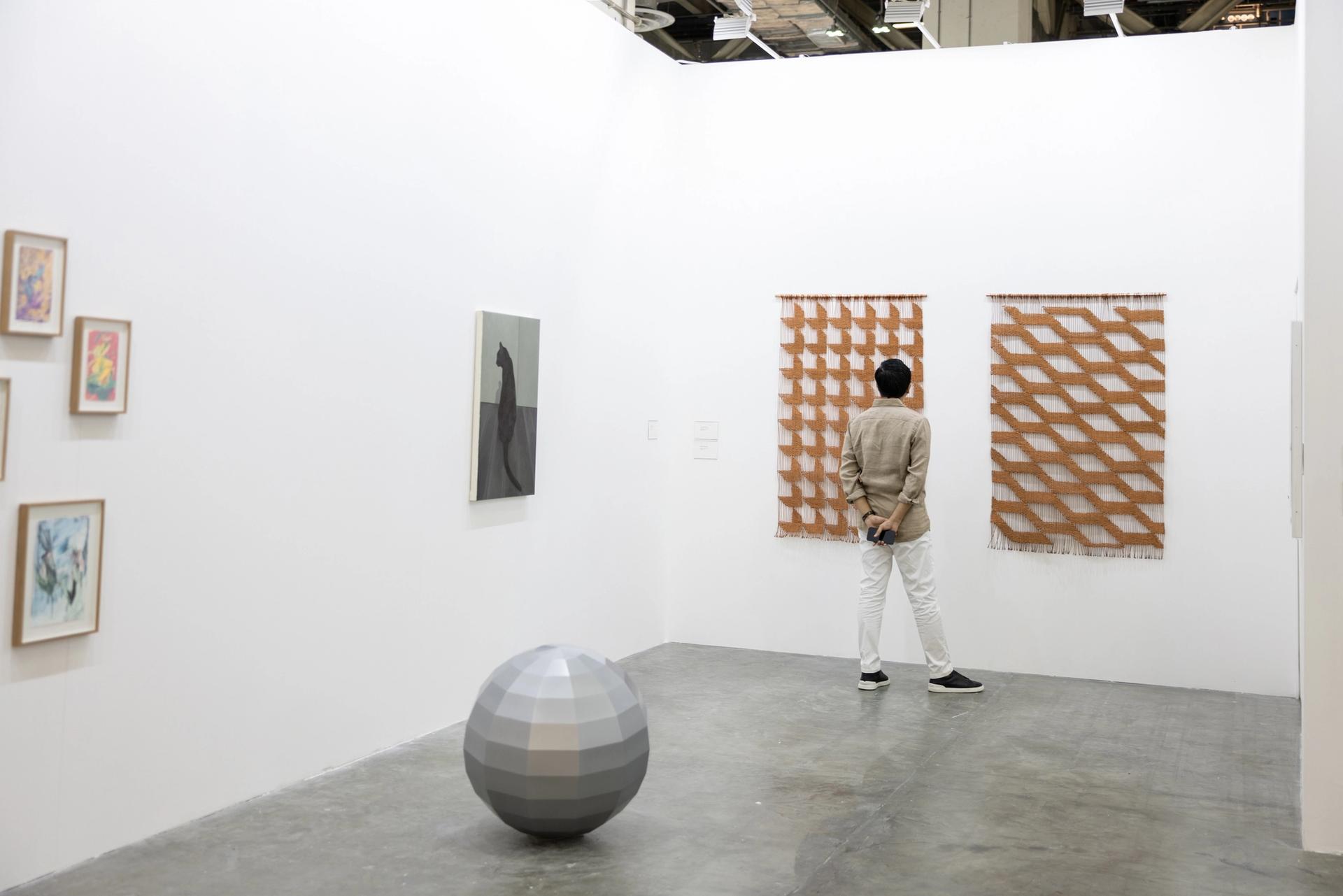
Galerie Gisela Capitain focuses on international contemporary art including in recent years by artists from Hong Kong and Japan Photo: Sam Chin; courtesy of Sam Chin and Art SG
Yeo sees promise in more engagement from foundations and corporate collections looking to meaningfully support emerging artists. She hopes the coming years “will see a greater shift among Singapore’s affluent mainstream towards engaging with contemporary art. Singapore hosts a diverse group of [locally-based] collectors—Europeans, Hong Kong residents, Australians, Americans, Chinese, Indonesians and Indians. However, there is only a small handful of local collectors who engage with contemporary art. Many prioritise decorative or design-focused works over conceptual ones.” As a Singaporean herself, Yeo says, “I sense this stems from a lack of ‘free speech’ that provides the language or critical discourse needed to understand contemporary art’s role in reflecting societal nuances.”
Helping that along are initiatives by the Art Galleries Association, such as the new September Singapore Gallery Month, “reflecting a growing interest in boosting visibility and collaboration”, says Yeo. The project also includes collector home tours, “speed dating” between artists and collectors, and educational talks.
International appeal
While Singapore’s art punches up for its size, with a population of 6 million, its market is also fuelled by its regional positioning. It particularly draws from the rest of Nusantara, also comprising Indonesia and Malaysia, which have vibrant artist and collector scenes but fewer institutions. The wider region of Southeast Asia looks to Singapore as its most developed centre, and the city-state also enjoys strong ties with East Asia and the West—particularly Australia.
The regional market as a whole has developed tremendously in recent years,
Emi Eu, project director, S.E.A. Focus fair
Singapore and Southeast Asia have “huge potential,” says Emi Eu, “and we are excited to play a part in its development,” welcoming “both established and emerging collectors, private and public, from Singapore and beyond who have an increasing appetite to discover artistic talents from the region.” Eu calls Singapore “the gateway to Southeast Asia—and the regional market as a whole has developed tremendously in recent years.”
“What is extremely exciting currently is the amount of cross-regional dialogue we are currently seeing, as the new players within the art ecosystem begin to foster collaboration and artistic exchange, as well as an interest in returning diaspora artists,” says Art SG’s fair director Shuyin Yang. “Visual art ecosystems tend to thrive when there is a flourishing of patronage and support, which is what we are witnessing in Indonesia and Thailand—and, with the development of the new Ayala Museum in Manila in the Philippines.” The recently renovated Ayala joins established institutions, a strong roster of galleries like Silverlens and The Drawing Room, and a lively local fair.

Yeo Workshop in Singapore’s Gillman Barracks will be presenting the work of Southeast Asian artists including Shayne Phua and Wey Leng Tei Courtesy of Yeo Gallery
With English widely used in the former British colony, Singapore is less intimidating to Western visitors than most of Asia, excepting Hong Kong. “A large part of Singapore’s international appeal resides in the English-speaking city’s ability to bridge the West and East,” says Renfrew, “and its relatively safe position amid rising geopolitical tensions between China and its neighbours.” Many but not all of the city’s ethnic Chinese majority also speak some dialect of Chinese.
“Over the past six decades, Singapore’s arts landscape has flourished, marked by a growing appreciation for art collecting and a vibrant cultural scene,” says Renfrew, while the arts around the broader Southeast Asia and Indo-Pacific region “becomes ever more relevant” culturally. Singapore provides “a key destination for galleries aiming to broaden their reach”, and its “multifaceted” local scene and regional engagement “supports Singapore’s vision of becoming a unique cultural and artistic powerhouse”.
• Art SG 2025, Marina Bay Sands Expo and Convention Centre, Singapore, 17-19 January 2025
This post was originally published on this site be sure to check out more of their content

